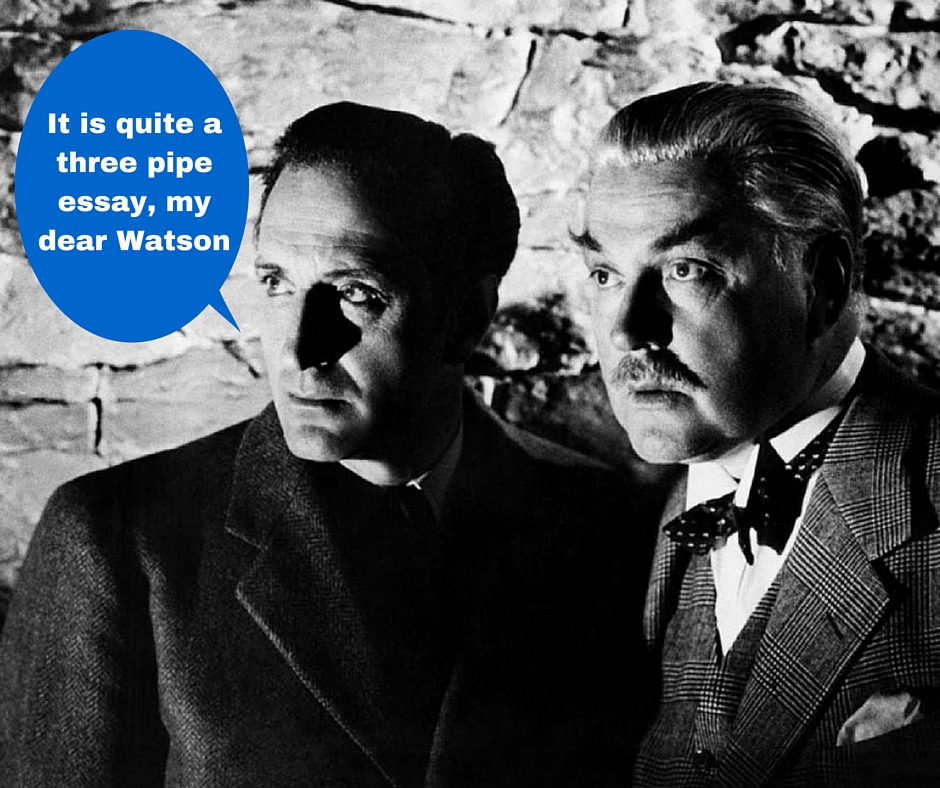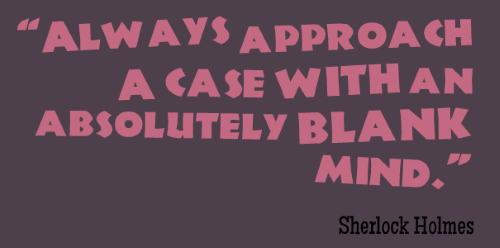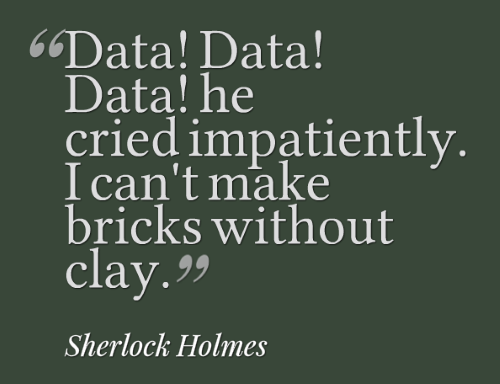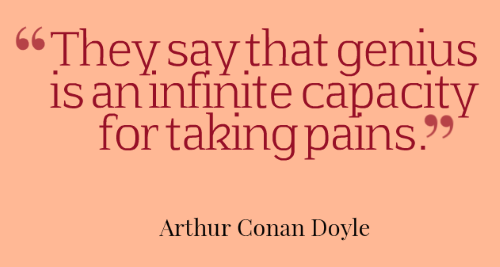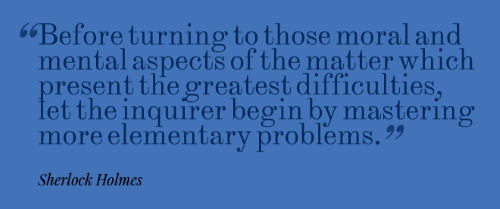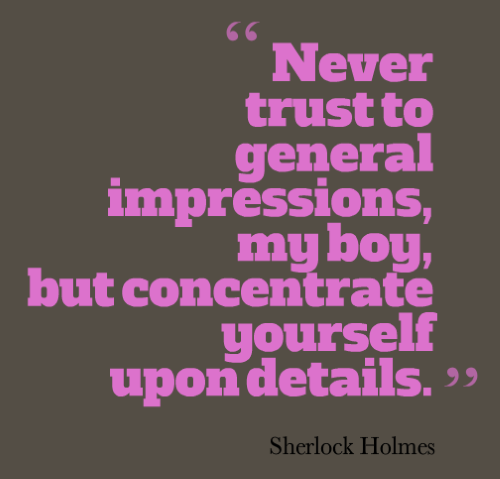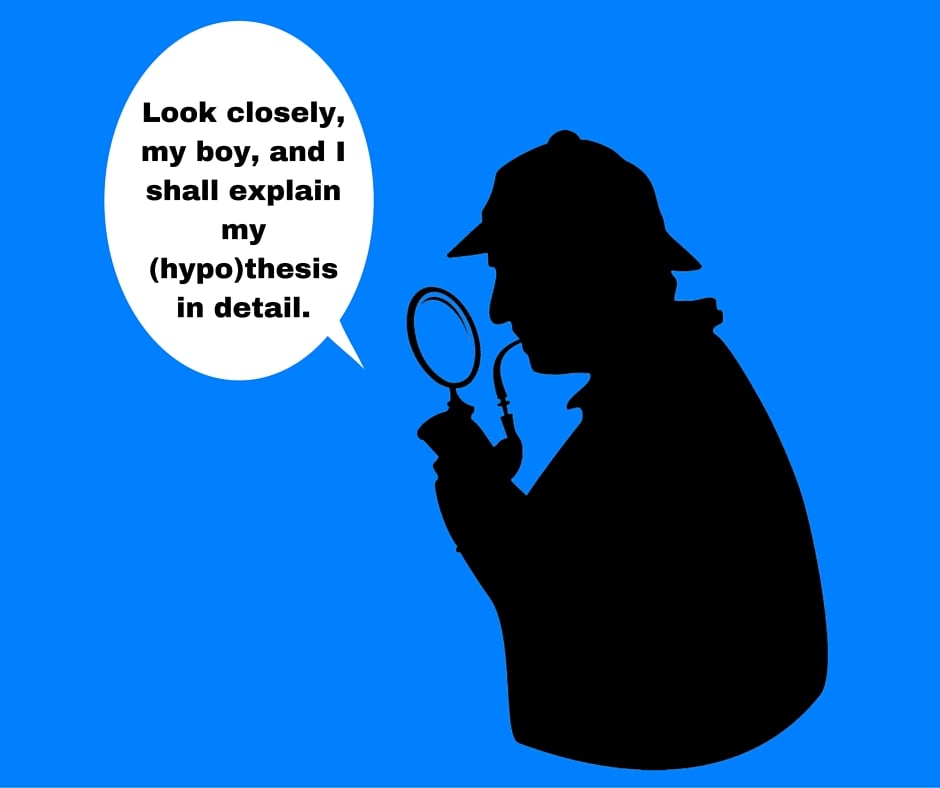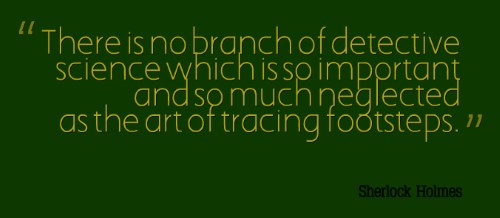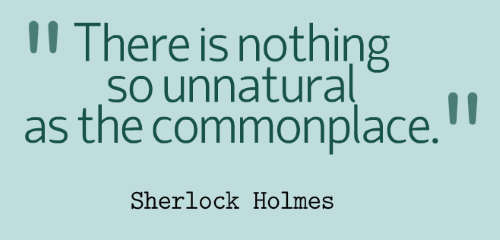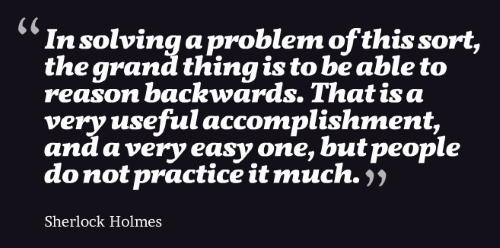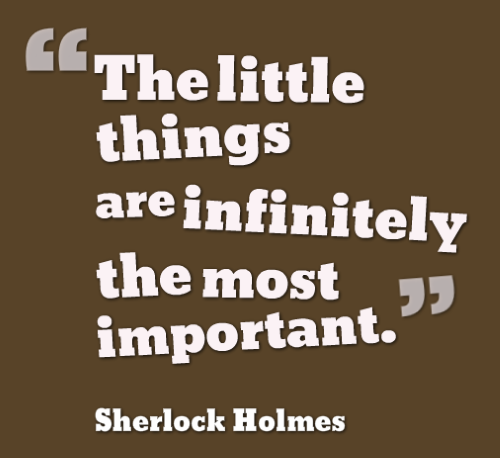Any reader of some or all of Sir Arthur Conan Doyle’s 60 Sherlock Holmes detective stories knows the author follows a certain formula.
First, a stranger visits Detective Holmes and his sidekick Watson, presenting them with a mysterious criminal quandary. Then Holmes and Watson visit the scene of the crime where Holmes is able to come up with a hypothesis.
Watson doesn’t fully understand the theory, but he follows Holmes throughout the investigation to see if he can prove it.
As the investigation progresses, Watson and other detectives fumble about, while Holmes is able to discover, analyze, and piece together certain elements that lead to the correct conclusion.
In the end, Holmes is proven right, but still has to explain it all to Watson, who is left awestruck by the great detective’s unsurpassed intuition.
It turns out, a classic Sherlock Holmes story has a lot in common with an explanatory essay.
In this example, you, the essay writer, are Sherlock, coming up with a hypothesis, finding evidence and clues, and explaining it all to Watson, your reader, in a clear and concise way that he can understand.
So let’s go on an adventure to discover how to write an explanatory essay that, like Sherlock Holmes, explains it all.
Brainstorm
Detective Holmes approaches each case with a blank mind, allowing him to come up with a theory uninfluenced by preconceived notions. I encourage you to approach the brainstorming phase of your writing project with a similar openness.
When I’m looking for a good topic for an explanatory essay, I like to find the right balance between what I already know and what I want to learn. It’s hard to write an essay meant to explain something in detail if you’re starting from scratch.
For example, I would never try to write an explanatory essay on how to be a detective of an actual crime. I know nothing outside of what I’ve seen on True Detective. I’m not sure that qualifies as a reliable source.
If you know nothing about a subject, it’s probably better to explore it in your free time than to choose it for an essay topic.
On the other hand, I would also advise you to avoid choosing a subject you already know everything about. For example, if you’re an actual detective, you could probably write a good explanatory essay on how to solve crimes. You’re unlikely to learn anything new in the process, though.
And if you aren’t learning something along the way, then what’s this all for?
Sometimes, you’ll be given a prompt to follow when writing your explanatory essay. In those instances, you won’t need to brainstorm a topic.
If you’re not given a prompt, then you need to come up with an idea on your own. Feeling stumped? Explore some example expository essays to get a feel for what a good topic might look like fleshed out into a full paper. Try these to get started:
- The Mass Appeal of Starbucks
- Generation Voyeur
- The Influence of Ancient Greece on Western Civilization
- Too Much Homework and Its Negative Effects
However, in either case, you’ll need to take the time to brainstorm a preliminary hypothesis based on what you already know, much like Detective Holmes does.
Research
Every theory that Sherlock comes up with during a case is based on the evidence he has and the clues he finds.
So while you will develop a working thesis for your paper very early in the process, you’ll need to do additional research to either prove that view or evolve it in a different direction. The more research you gather, the more prepared you’ll be to explain the situation to the reader.
For example, let’s imagine you’re writing about falling crime rates in your city, state, or country. You may have a strong idea for why those rates are dropping. But your explanatory essay is for explaining the actual reason for those dropping rates.
That means you either need to find hard evidence that supports your idea or start looking in a different direction.
Remember, in an explanatory essay, the main point is to analyze an idea or view. Part of any good analysis is data, data, data!
Moreover, since you’re explaining something to your reader, with the idea of providing a thorough analysis, don’t waste your time with sources that aren’t universally considered reputable.
There’s no quicker way to lose an explanatory essay reader than to provide evidence from the likes of a forum or Wikipedia.
Read How to Apply the CRAAP Test to Your Essay Sources.
You cannot make a brick without clay, and you cannot write a serious essay without serious sources.
Pattern and Outline
Once you have finished doing research and come up with a direction for your explanatory essay, it’s human nature to want to jump right into writing it. Genius, however, rarely results from jumping in without a plan.
Instead, after gathering research, I encourage you to come up with an organizational pattern for your essay and prepare an outline. This work may sound like a pain now, but it can be the difference between an essay that explains it all and one that explains a bit.
Various patterns of organization work well in an explanatory essay, including compare/contrast, problem/solution, and chronological patterns.
When choosing a pattern, remember that it serves two purposes. One, it helps logically guide you through the writing process. Two, it lays out the information in a way that’s easy for the reader to read, understand, and retain.
Once you have organized all of the evidence you gathered, start creating an outline of your paper. The five-paragraph essay outline can work great for an explanatory essay.
Just as Sherlock Holmes pieces every parcel of evidence together before reaching a logical conclusion, you want to outline all of the pertinent information before writing your essay.
Introduction and Thesis
Just like Sherlock has to explain everything to Watson, you, the writer, must assume the reader knows nothing. Therefore, you must explain everything.
A good introduction allows space for you to break down these elementary aspects before moving on to the aspects of higher importance to your essay.
Begin your essay by grabbing the reader’s attention in some way. Propose a question or a stunning fact. This will hook your readers into the essay. It will guide them toward the ever-important thesis statement.
Before getting to the thesis statement, which should be located at the end of your first paragraph, use the space after your hook to provide any critical background information.
Once that’s out of the way, hit your reader with the gist of your paper, a one-sentence summation of the idea that will be explained in your essay. At this point, you can assume that your reader, like Watson, needs a bit more convincing. This is where the body of your paper comes in.
Be Supportive
Once you’ve established your thesis at the end of your introduction, it’s your job as the writer to use the body paragraphs of your paper to convincingly support that thesis.
Generalities are not convincing, as Holmes alludes to in the quote above. Sherlock would not be a successful and entertaining detective if he wasn’t able to give a detailed explanation for each theory he presents.
Similarly, you must be able to present detailed explanations on important aspects of your subject.
There’s a specific structure for body paragraphs that can be used to make the greatest impression on your reader. It starts with a strong topic sentence. You should consider each the thesis of the paragraph.
Use this sentence, the first of each body paragraph, to let the reader know what important point you’re going to make in the paragraph.
You should follow the topic sentence with supporting sentences that back up and explain your topic sentence with details from your research. You will then cap your paragraph with a concluding sentence.
That final sentence wraps up any loose ends and explains the importance of the previously presented evidence.
Conclusion
Imagine Sherlock Holmes, with his magnifying glass, following the footprints of a criminal, recounting the details of the crime as he goes. A conclusion traces your own footsteps, so to speak.
A killer conclusion paragraph gives you a chance to review and summarize your thesis and main points, and tie up loose ends. It also lets you offer readers something to think about.
You could achieve this by discussing the larger significance of your subject or by presenting any unanswered questions related to your topic.
For an explanatory essay, this could be a chance to encourage your reader to get involved with your subject, whether it’s an activity or a subject worth further exploration.
Be Creative, and Break the Rules
Now that you know the rules related to writing a strong explanatory essay, feel free to break them. This isn’t the first time, nor will it be the last, that I have encouraged my readers to break the rules when writing an essay.
Just as I encourage you to push yourself to learn something new when writing your explanatory essay, I also find it infinitely important for you, as a writer, to find new and interesting ways to deliver information.
Consider the above instructions for writing an explanatory essay as a tried-and-true strategy.
However, tapping into your own creativity and imagination when writing is natural. Take it from Sherlock Holmes or, in this instance, Sir Arthur Conan Doyle.
Reverse Outline
An extremely useful, yet seldom-used practice in essay writing is the reverse outline. A reverse outline allows you to change directions after finishing your explanatory essay draft. It allows you to reason backward, if you will.
The idea is that you create an outline of your finished product, taking notes to ensure that you have sufficiently stayed on topic and focused on your thesis.
This practice can be equally useful in creating a focused final draft of your explanatory essay and in checking the alibi of your prime witness.
Proofread Your Explanatory Essay
Once you’ve settled on a final draft of your explanatory essay that explains it all, one that establishes an amazing thesis built on strong evidence and a clear structure, don’t forget to have someone proofread it.
I have recurring nightmares of bright students throwing their precious time and energy into an amazing essay draft just to lose points at the finish line. Why? They make common grammar and wording mistakes that distract from their great ideas.
So for the sake of my sleeping habits, proofread your essay.
It is elementary, my dear reader.

